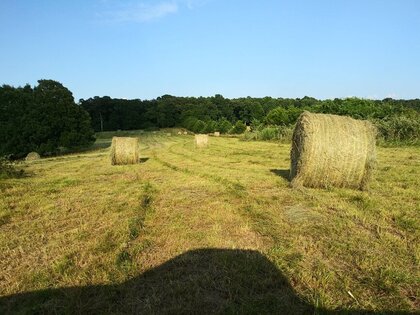
The Most Popular Horse Breeds Of 2019
Equestrian Advice & Guides General Equestrian
Build your business profile for FREE and expose your services to thousands of potential clients!
Create my profile now!
What is the carrying capacity of your horse farm?
Do you know how many horses can be adequately located at your farm? Many different factors go into deciding how many horses can be sustained on your property. What type of horses are you going to buy? How will the horses be used? The horses on your property belong to you or do you run a boarding business? Do you have horses that you give lessons on, or do you train horses for other people. The community that your in, is it horse country, or horse friendly? These are probably questions that you never considered before, but you should!
The general rule of thumb for horses is one horse per acre or two acres for the first horse and one acre for the next to prevent overgrazing of the pasture. You may also have to consider the zoning for the land your looking at for horses. Land management practices and water conservation regulations may also play a factor in your horse property. The other big question is, do you know how hard of work running a horse facility is? Do you know someone else that runs a farm or facility, maybe you should ask them some of your questions? You need to have farm management skills so that you can manage the pastures, rotate them to prevent overgrazing, manure management, water conservation and management so that you keep things in balance with the environment. How do other people in the area see horses? They are beautiful majestic creatures but the manure and flies are nasty. You need good management to keep your neighbors friendly!!
Horses were designed by nature to meet their nutritional needs by grazing. It’s an effective inexpensive way to meet their nutritional and fiber needs. If you're at a boarding facility that depends on turning horses out to meet part of their nutritional needs, you may need more land for pasture. Its important to keep the ground over 50% covered in pasture to prevent erosion and loss of your topsoil. Horses can be very picky grazers if they are given to many options. Cattle will eat about anything in the pasture including a few weeds. So you need to plan your pastures so you have good coverage depending on the weather and the season. You should never let horses eat the grasses shorter then 3-4 inches so it isn’t damaged and can grow back thick and flourish.
Barns and boarding facilities break their areas up into smaller paddocks which allow horses to get exercise and graze some, but their dietary needs are met by feed, hay and supplements. These exercise or dry lots should allow at least 400 square feet per horse. Its important to maintain these areas well to prevent build up of manure, leading to flies, odor and attracting parasites. Facilities that mainly stall horses require less acreage. These horses get their exercise from training or lessons, so they do not require turnout on a regular basis. The best way to maintain any pasture areas is to allow them a time to rest and recover from regular grazing. Commercial boarding facilities are located closer to cities and more populated areas so they must meet more zoning and ordinances requirements. If your target clients are training, lessons, and boarding horses, you have to meet the requirements of these neighborhoods.You need to make sure you know the state and federal regulations for horses in your area. Do your homework before you jump in with both feet, make sure the neighbors see horses the same way you do and not as a source of flies, odors, and dust. The town or county may be planning rezoning, so make sure suburbia expansion isn’t going to affect your agricultural land designation.
How do you know when there are to many horses at a facility? Do the horses get the proper care, can every horse have eyes laid on them daily, do the stalls get evaluated and cleaned on a regular basis, can the horses all receive the proper nutritional care they need for their individual jobs, if you answered yes to these questions, your doing a great job of stable mansgement. If not you may need to downsize your operation to fit the limitations your facing in staffing, feeding, or stalling the horses under your care. I hope this information will be helpful to you on your farm or in your horse facility.

